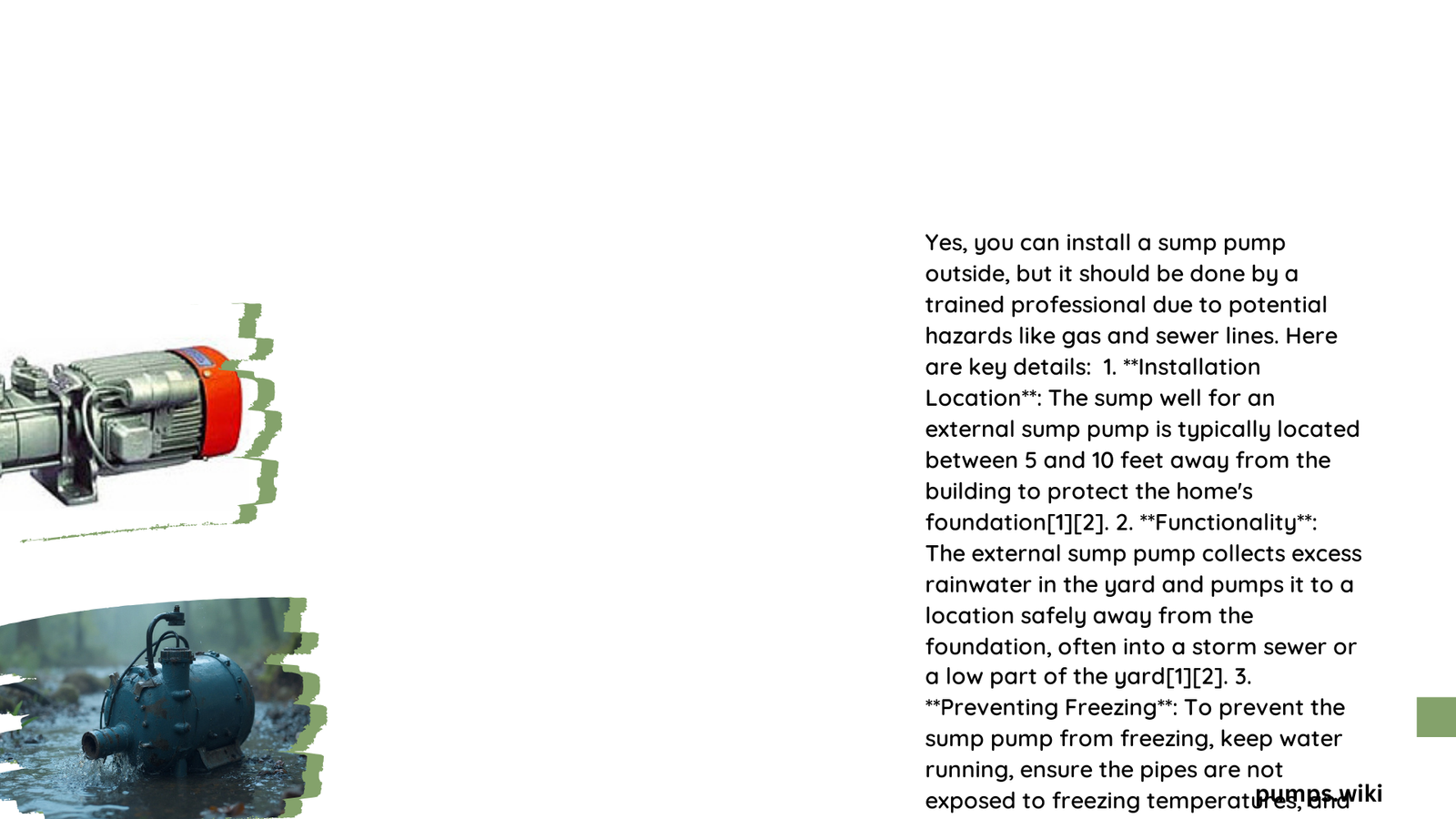Installing an outdoor sump pump offers homeowners a strategic solution for managing water drainage and preventing potential foundation damage. This comprehensive guide explores the critical aspects of outdoor sump pump installation, addressing technical requirements, environmental considerations, and practical implementation strategies to help you make an informed decision about protecting your property from water-related challenges.
What Makes an Outdoor Sump Pump Installation Possible?
Outdoor sump pump installations are viable when specific conditions and requirements are met. Homeowners must carefully evaluate their property’s unique drainage characteristics, soil composition, and water management needs before proceeding with the installation.
What Are the Primary Considerations for Outdoor Sump Pump Placement?
| Consideration | Critical Factors | Recommended Approach |
|---|---|---|
| Soil Drainage | Water Table Depth | Minimum 22-inch pit depth |
| Ground Slope | Natural Water Flow | Positive drainage gradient |
| Climate | Temperature Variations | Freeze-protection measures |
How Do I Prepare the Installation Site?
Site Evaluation Steps
- Conduct a comprehensive soil assessment
- Measure ground slope and drainage patterns
- Identify potential water accumulation zones
- Determine optimal pump location away from structural foundations
What Type of Pump Should I Select?
When choosing an outdoor sump pump, consider these critical factors:
- Pump Rating
- Must be specifically designed for outdoor use
- Corrosion-resistant materials
-
Weather-sealed electrical components
-
Pump Capacity
- Match pump capacity to expected water volume
- Consider local precipitation patterns
- Select pumps with appropriate horsepower
What Are the Technical Installation Requirements?
Essential Installation Components
- Gravel foundation (minimum 12 inches deep)
- Flexible PVC Schedule 40 discharge pipes
- Float switch mechanism
- Check valve for backflow prevention
- Dedicated electrical circuit
How Do I Manage Drainage Effectively?
Successful outdoor sump pump drainage depends on:
– Proper pipe grading
– Discharge point selection
– Minimum pipe diameter (1.5 inches recommended)
– Maximum discharge line length (50 feet)
What Legal and Regulatory Considerations Exist?
| Requirement | Action Needed |
|---|---|
| Building Permits | Check local municipal regulations |
| Electrical Codes | Ensure ARC fault protection |
| Plumbing Standards | Comply with local drainage guidelines |
What Are the Potential Cost Implications?
Estimated Cost Breakdown
– Materials: $500 – $2,000
– Professional Installation: $500 – $2,000
– Total Project Range: $1,000 – $4,000
What Challenges Might I Encounter?
Potential challenges include:
– Freezing temperature impacts
– Soil composition variations
– Complex drainage requirements
– Electrical installation complexities
Pro Tips for Successful Installation
- Prioritize professional consultation
- Invest in high-quality, weather-resistant equipment
- Plan for long-term maintenance
- Consider seasonal variations in water management
Conclusion

An outdoor sump pump installation requires meticulous planning, technical expertise, and a comprehensive understanding of your property’s unique drainage characteristics. By following professional guidelines and considering multiple factors, homeowners can effectively manage water drainage and protect their property from potential water-related damage.
